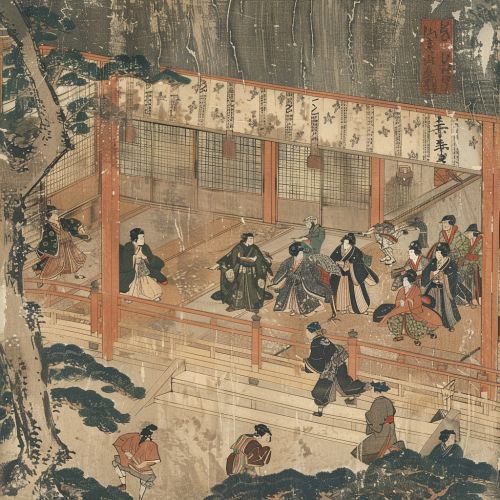Edo period
Background
The Edo period (1603–1868) was a significant era in the history of Japan, marked by the rule of the Tokugawa shogunate. This period is known for its unique political structure, cultural developments, and economic growth.
Political Structure
The political structure of the Edo period was characterized by a feudal system, with the Tokugawa shogunate at the apex. The shogunate was a military government led by the shogun, who was the de facto ruler of Japan, although the emperor remained the symbolic head of state.


The shogunate implemented a system of alternate attendance (sankin-kōtai), which required daimyōs (feudal lords) to spend alternate years in the shogun's court in Edo. This system served to strengthen the shogunate's control over the daimyōs.
Culture
The Edo period saw a flourishing of Japanese culture, with developments in various fields such as art, literature, and theater. The period is particularly known for the emergence of ukiyo-e, a genre of woodblock prints and paintings that depicted scenes from everyday life, landscapes, and tales of the supernatural.


In literature, the Edo period saw the rise of gesaku, a form of popular literature that often satirized contemporary society. Kabuki and bunraku, forms of traditional Japanese theater, also gained popularity during this period.
Economy
The Edo period was marked by significant economic growth and the development of a market economy. The period saw the growth of industries such as rice cultivation, sake brewing, and silk production. The rise of urban centers, particularly Edo (modern-day Tokyo), led to the development of a consumer culture.
End of the Edo Period
The Edo period came to an end with the Meiji Restoration in 1868, which marked the restoration of imperial rule. The period was marked by internal unrest and the increasing pressure from Western powers to open up Japan to foreign trade.
